Every year, hundreds of people in the UK are hospitalised due to carbon monoxide poisoning, a silent killer that can strike without warning.
This colourless, odourless gas is produced when fossil fuels are burned inefficiently, often due to poorly maintained appliances or inadequate ventilation.
Having a reliable alarm in your home is crucial for safety. In this comprehensive guide, we’ll explore the dangers of monoxide poisoning and the importance of installing a suitable carbon monoxide alarm to protect your family.
Key Takeaways
- Understand the risks associated with carbon monoxide poisoning.
- Learn about the latest technology in monoxide alarm systems.
- Discover the best practices for installing and maintaining a carbon monoxide detector.
- Find out about the current UK regulations regarding carbon monoxide safety in homes.
- Make an informed decision when selecting a carbon monoxide alarm for your home.
Understanding the Silent Killer: Carbon Monoxide Dangers
Carbon monoxide is a colourless, odourless gas that poses significant health risks. You need to understand how it affects your body and the warning signs to look out for.
What is Carbon Monoxide and How is it Produced?
Carbon monoxide is produced through incomplete combustion of fuels like gas, oil, and wood. It can emanate from faulty boilers, blocked chimneys, or poorly maintained generators. When inhaled, it interferes with the oxygen-carrying capacity of your red blood cells, leading to tissue hypoxia.
Symptoms of Carbon Monoxide Poisoning
The initial symptoms of carbon monoxide poisoning are often mistaken for flu, including headaches, dizziness, and nausea. As exposure continues, more severe symptoms develop, such as confusion, unconsciousness, and potentially death. Certain groups, like children and the elderly, are at higher risk due to their vulnerability.
Why Every UK Home Needs a Carbon Monoxide Detector
Carbon monoxide detectors are a crucial addition to any UK home, providing a vital layer of protection against this silent killer. You can’t taste, see, or smell carbon monoxide, making it a particularly insidious threat.
The Limitations of Human Senses
Human senses are unable to detect carbon monoxide, which makes it imperative to have a detector. This colourless, odourless gas can be present in your home without you even realising it.
UK Statistics on Carbon Monoxide Incidents
UK statistics reveal the alarming reality of carbon monoxide incidents. According to recent data, there are numerous cases of carbon monoxide poisoning reported annually, resulting in significant health impacts and, tragically, fatalities. The most common sources of carbon monoxide leaks in UK homes include faulty boilers and poorly maintained appliances.

How Carbon Monoxide Detectors Work
A carbon monoxide detector’s primary function is to identify potentially lethal concentrations of CO in your home and trigger an appropriate response. These devices are equipped with sensors that detect CO levels, and their effectiveness is crucial for preventing carbon monoxide poisoning.
Sensor Technologies Explained
CO detectors typically employ one of several sensor technologies, each with its own characteristics and lifespan. Advances in sensor technology have led to the development of 10-year alarms that are becoming increasingly common. The lifespan of a CO detector can range from 5 to 10 years, depending on the sensor type and manufacturer design.
| Sensor Technology | Lifespan | Characteristics |
|---|---|---|
| Biomimetic Sensor | 5-7 years | Mimics the way haemoglobin reacts to CO |
| Metal Oxide Semiconductor | 5-10 years | Highly sensitive, but may be prone to false alarms |
| Electrochemical Sensor | 5-10 years | High accuracy, low power consumption |
Alarm Response Mechanisms
When a carbon monoxide detector identifies dangerous CO levels, it triggers an alarm to alert occupants. The nature of the alarm can vary depending on the device and the level of CO detected. Some detectors feature pre-alarm warnings for low-level detections, while others sound a full emergency alarm for dangerous concentrations. Smart carbon monoxide alarms can also send notifications to your mobile phone when you’re away from home.
Interconnected alarm systems ensure that when one carbon monoxide alarm triggers, all alarms in the property sound simultaneously, enhancing safety.
Key Features to Look for in Carbon Monoxide Detectors
To protect your home and family from carbon monoxide poisoning, it’s crucial to understand the essential features of CO detectors. When choosing a carbon monoxide detector, several factors can impact its effectiveness and reliability.
British Standards and Certification (BS50291)
Ensure that your CO detector meets British Standards by looking for BS50291 certification. This standard guarantees that the device has been tested and proven to detect carbon monoxide accurately. Compliance with this standard is crucial for your safety.
Power Supply Options
Carbon monoxide detectors come with various power supply options, including battery-powered, mains-powered, or a combination of both. Consider a detector with a battery backup in case of power outages to ensure continuous protection.
Sensor Lifespan and Warranty
CO detectors typically have a lifespan ranging from 5 to 10 years. Advances in sensor technology have made 10-year alarms more common. Manufacturers often provide warranties that match the sensor’s lifespan, typically ranging from 5 to 10 years. Understanding the sensor lifespan and warranty can help you make an informed decision.
| Feature | Description | Importance |
|---|---|---|
| BS50291 Certification | Ensures compliance with British Standards for CO detection | High |
| Power Supply | Battery-powered, mains-powered, or combination | Medium |
| Sensor Lifespan | Ranging from 5 to 10 years | High |
| Warranty | Matching the sensor’s lifespan | Medium |
As CO detectors have a limited lifespan, it’s essential to check the end-of-life warning features that alert you when it’s time to replace the device. Maintaining documentation of purchase dates and warranty information is also crucial for ensuring your detector remains effective throughout its lifespan.
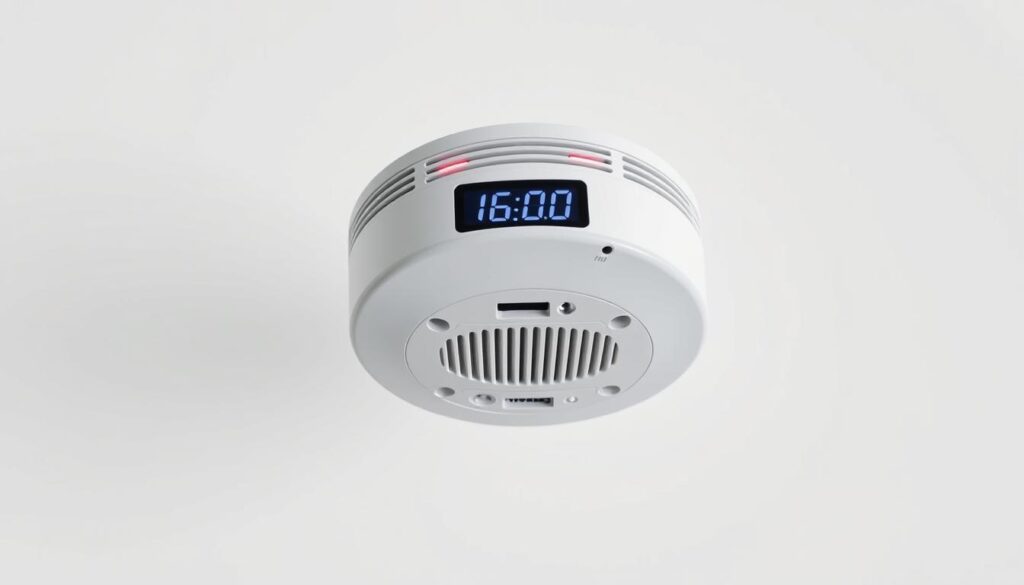
By considering these key features, you can select a reliable carbon monoxide detector that provides optimal protection for your home and family.
Top Carbon Monoxide Detectors for UK Homes
With numerous options available, choosing the best carbon monoxide detector for your UK home can be overwhelming. To help you make an informed decision, we’ve reviewed some of the top-rated carbon monoxide detectors available in the UK market.
FireAngel Pro Connected Smart Carbon Monoxide Alarm
The FireAngel Pro Connected Smart Carbon Monoxide Alarm offers advanced features such as smart connectivity and real-time alerts. Displays CO levels and peak readings, ensuring you’re always informed about the safety of your home.
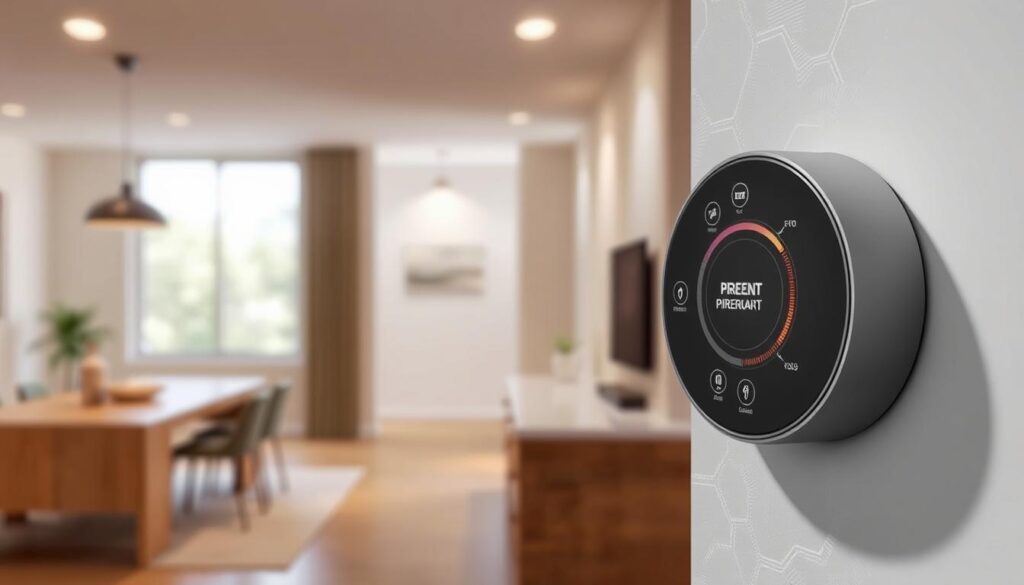
Kidde K5CO 10-Year Life Carbon Monoxide Alarm
The Kidde K5CO is a reliable and long-lasting carbon monoxide alarm with a 10-year battery life. It’s designed to provide continuous protection without the need for frequent battery replacements.
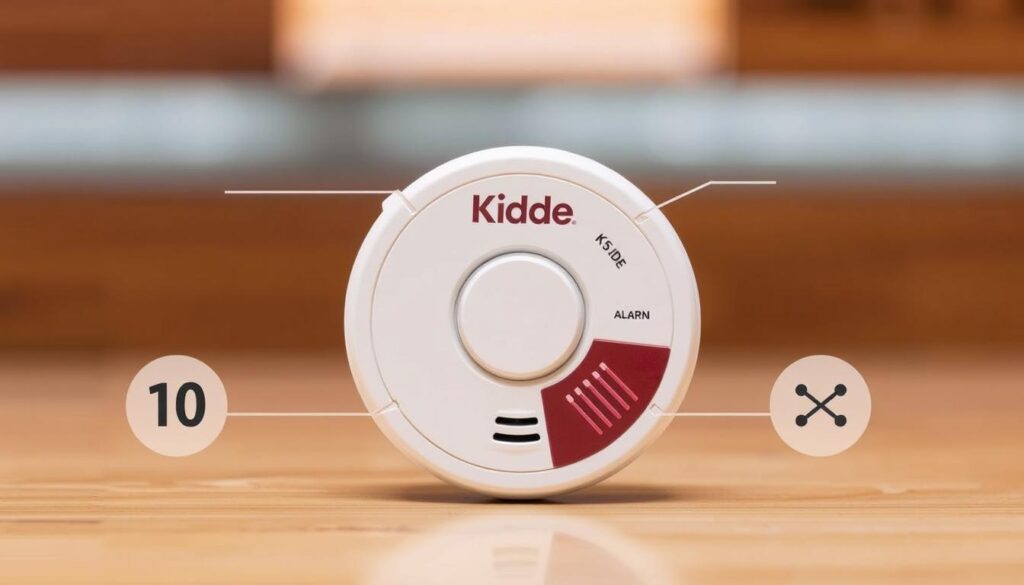
Aico Ei208 Standalone Carbon Monoxide Alarm
The Aico Ei208 is a standalone carbon monoxide alarm that offers reliable detection and alarm functionality. It’s a straightforward and effective solution for home safety.
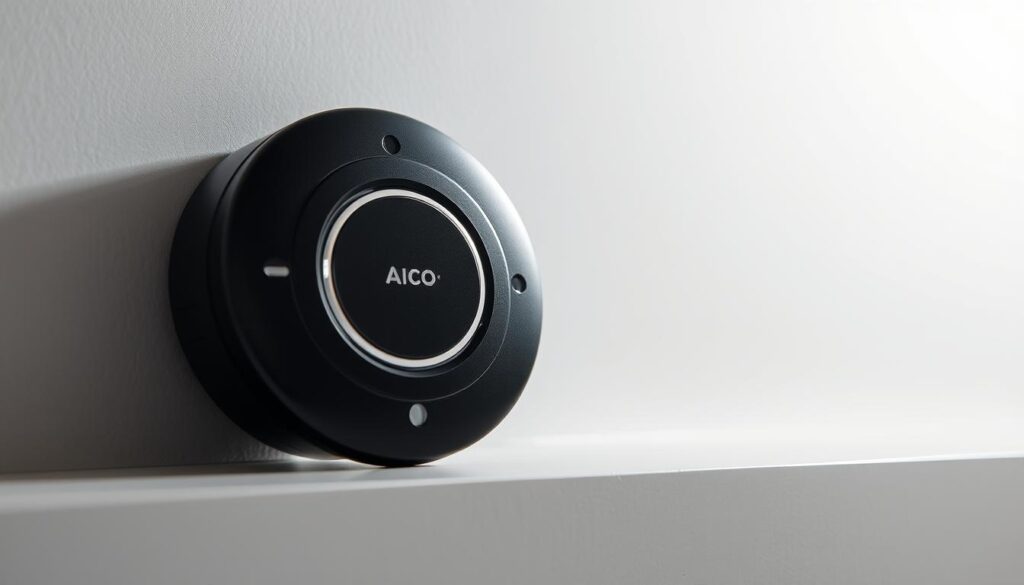
FireAngel FA3820-EUX10 Wireless Carbon Monoxide Alarm
The FireAngel FA3820-EUX10 Wireless Carbon Monoxide Alarm features a 10-year sealed battery and wireless connectivity, making it a convenient and low-maintenance option. It also displays CO levels from 10ppm and has a peak level memory function.
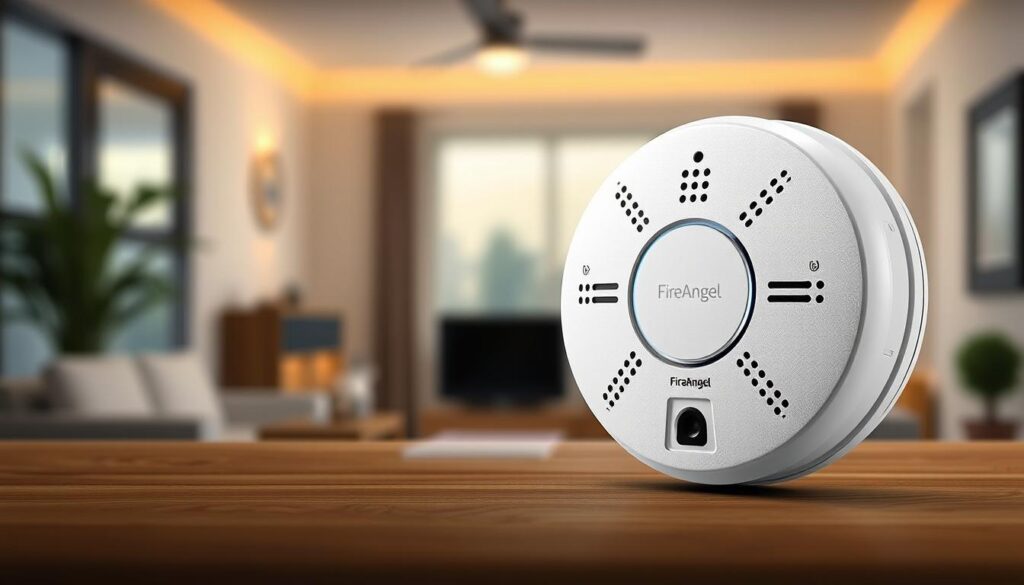
These top-rated carbon monoxide detectors are designed to provide you with peace of mind and protection for your family. When choosing a detector, consider factors such as sensor lifespan, power supply options, and certification to British Standards.
Installation Guidelines for Carbon Monoxide Detectors
To effectively protect your home from carbon monoxide poisoning, it’s essential to follow the correct installation guidelines for your carbon monoxide detectors. Proper placement and installation height are critical for the detectors to function correctly.
Optimal Placement in Your Home
When deciding where to install your detectors, consider the layout of your home. It’s recommended to install them on every level of your home and near sleeping areas. For wall-mounted installations, the optimal height is typically at eye level. You should refer to the manufacturer’s guide for specific instructions, such as the Nest Protect User Guide for detailed installation instructions.
Installation Height and Distance Requirements
According to British Standards, the installation height for wall-mounted carbon monoxide detectors should be between 1-3 meters from the floor. It’s also crucial to maintain a certain distance from potential sources of carbon monoxide, such as boilers or chimneys. Here are some key considerations:
- Install detectors at least 1 meter away from potential carbon monoxide sources.
- Ensure detectors are not near corners or obstructions that could affect their performance.
- For rooms with high ceilings or unusual airflow patterns, consider the specific guidance provided by the manufacturer.
Maintenance and Testing of Your Carbon Monoxide Detector
To keep your carbon monoxide detector functioning properly, regular maintenance is essential. This involves testing the device and ensuring its power source is reliable.
Regular Testing Procedures
You should test your carbon monoxide detector regularly to ensure it’s working correctly. Most detectors have a test button that you press to verify the alarm sounds. It’s recommended to test your detector at least once a week. If your detector is interconnected with other safety devices, testing one device should trigger all connected alarms.
Battery Replacement Guidelines
For detectors that use replaceable batteries, it’s crucial to identify when they need replacing. Many detectors emit a distinct signal, such as a beep, to indicate low battery. The type of battery and its life vary by detector model. Always replace batteries with the type recommended by the manufacturer. Some detectors come with sealed 10-year batteries, eliminating the need for frequent replacements. If your detector continues to signal low battery after replacement, it may be nearing the end of its life.
UK Regulations and Legal Requirements
As a homeowner or landlord in the UK, it’s essential to be aware of the legal requirements for carbon monoxide safety. The regulations surrounding carbon monoxide detectors are crucial for ensuring the safety of occupants in rental properties.
2022 Welsh and Scottish Legislation
In 2022, Wales and Scotland introduced new legislation regarding carbon monoxide alarms in homes. These regulations mandate the installation of carbon monoxide detectors in rooms with solid fuel appliances. Landlords are required to ensure these detectors are functioning correctly at the start of each tenancy.
Landlord Responsibilities
Landlords across the UK have specific responsibilities regarding carbon monoxide safety. They must install carbon monoxide alarms where necessary and maintain them throughout the tenancy. Failure to comply can result in significant penalties. Landlords should also keep records of carbon monoxide detector maintenance and testing to demonstrate compliance.
Conclusion: Protecting Your Family from Carbon Monoxide
Protecting your family from the dangers of carbon monoxide requires a reliable detection system. Throughout this article, we’ve highlighted the critical importance of carbon monoxide detectors in UK homes. To recap, a quality carbon monoxide alarm is a vital investment for your family’s safety. For a comprehensive guide on smoke alarms and carbon monoxide detectors, you can visit this resource. Ensuring you have the right detector, placing it correctly, and maintaining it regularly are crucial steps. By taking these measures, you’re not only safeguarding your home but also the people you care about.



